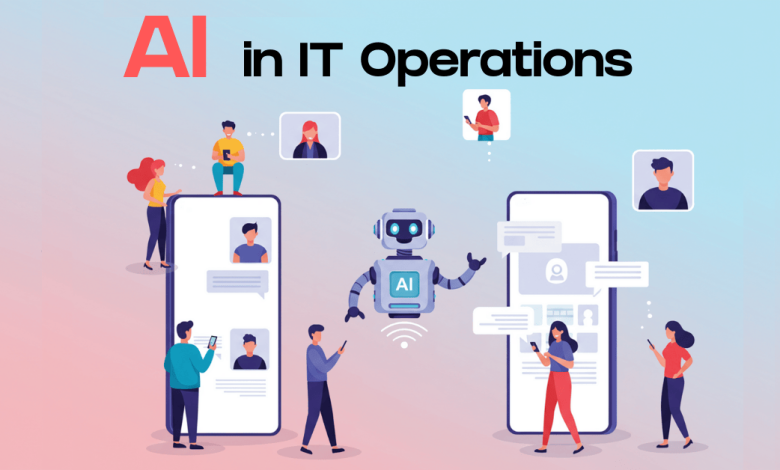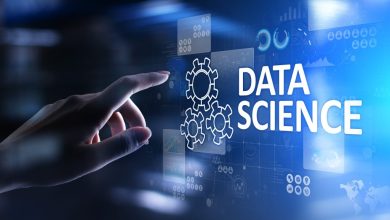
Artificial Intelligence is finding applications in many industries, transforming the way that professionals think about work. From marketing automation to healthcare diagnostics, and AI-assisted sales, Large Language Models enable efficiencies in many aspects of today’s work. However, there’s still one area where AI is lagging behind: IT operations.
In the context of Information Technology, AI won’t replace the role and tasks of Network Engineers, System Administrators, and similar roles. AI will enhance their responsibilities, quickly elevating their tasks from repetitive to more strategic ones, such as network design. Bottom line, the future of IT won’t be one where AI will replace humans, but work alongside them.
In this article, I will discuss the role of AI in Information and Communications Technology, how it’s shaping this industry, the job market, and where the opportunities and challenges lie.
The Human + AI Collaboration Model
AI, like many past trends such as the advent of cloud computing, SaaS applications, or remote work, promises us more convenience, flexibility, and productivity. At the same time AI, like those technologies, introduces their own adoption challenges related to privacy, copyright, and model bias.
In IT Operations, there are several areas where AI brings improvements:
- Root Cause Analysis: By aggregating, processing, and analyzing large and comprehensive sets of performance metrics, device logs, and network flows, LLMs can independently identify root causes of network and system outages; this enables quick resolution of network issues and reduced load on engineering and support teams.
- Network Automation: An agent could respond to network conditions and autonomously update the network configuration beyond the current scope of routing protocols; many private and open projects for instance sparked the development of MCP servers for network engineers.
Saying that AI will replace humans is somewhat exaggerated. The human factor is still a key component in the adoption and integration of Artificial Intelligence within IT Ops. Humans are still needed to verify AI operations and make changes if needed. Like software adoption, AI follows a similar lifecycle that includes the stages of analysis, design, development, testing, deployment, and maintenance.
To conclude, even when AI augments IT staff by automating routine checks, the final decision-making remains with the engineers.
AI in Digital Experience Monitoring
An area in IT Operations that is drawing interest for AI use is Digital Experience Monitoring (DEM). DEM is the network monitoring branch that focuses on verifying the end-user experience of network users. The need for DEM solutions has been increasing in the past few years thanks to the adoption of SaaS solutions and remote work.
The problem with DEM adoption is that not all organizations’ support teams have sufficient expertise to handle the volume of support requests. Troubleshooting remote end-user experience issues can be a challenging task when there’s limited information available, or when there’s too much data with no context. As a result, many troubleshooting sessions may be inconclusive or require escalation to higher engineering levels. This also causes many DEM implementations to fail due to lack of adoption, without any improvement in remote users’ digital experience.
In this context, the integration of AI with DEM tools can generate ROI. AI can guide entry level analysts to interpret the network performance data collected. That would help the analyst identify the root cause without requiring a costly escalation to Level 2 or 3 engineers. Troubleshooting tasks, such as resolving end-user complaints that previously required expert attention, can now be handled by a broader group of users.
A recent report by MIT revealed that approximately 95% of AI pilots fail to deliver value. It’s clear that there’s an opportunity for AI adoption to increase the success of DEM projects especially at organizations that have limited technical resources.
Challenges in AI’s Adoption
Before OpenAI’s release of the first version of ChatGPT in 2022, for the few organizations experimenting with Artificial Intelligence, AI was mostly a research project limited to specific areas. Since then, dozens of new commercial LLMs have been launched, which caused a rapid adoption of AI within the enterprise.
The introduction of AI within an organization raises two main concerns:
- Data privacy risks – Since AI requires the collection and analysis of large amounts of data, there’s an inherent risk of sharing sensitive and Personal Identifiable Information (PII) with it. For this reason, it’s important to ensure that the data processed by AI doesn’t contain sensitive data. A way to reduce such risk is to implement data privacy measures similar to those of GDPR or CCPA.
- Errors and bias in AI models – AI is not always a trusted advisor, and far from being correct 100% of the time. For example, a recent paper from OpenAI describes how AI models can provide false answers rather than no answers at all. Issues like this one demonstrate that human supervision is necessary in ensuring the accuracy and validity of AI findings. Like any other technology, it requires training and experience.
Closing Remarks on AI in IT Operations
AI is poised to transform IT operations from a reactive, firefighting approach to one focused on proactive assurance and even predictive optimization. Rather than replacing IT engineers, AI will redefine their roles, allowing them to focus on higher-value strategic tasks while routine monitoring and analysis are automated. To fully harness these benefits, organizations should adopt frameworks that balance automation with human oversight. This strategy will ensure that AI enhances decision-making while engineers maintain control and accountability.




